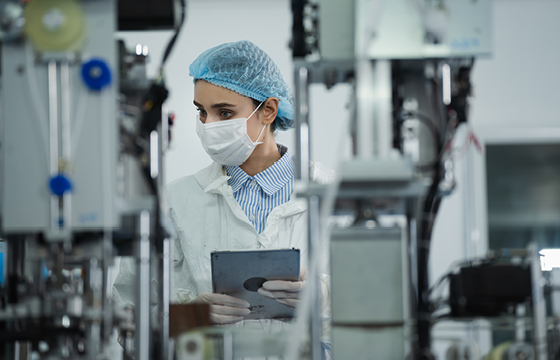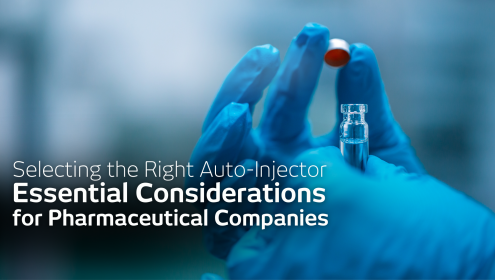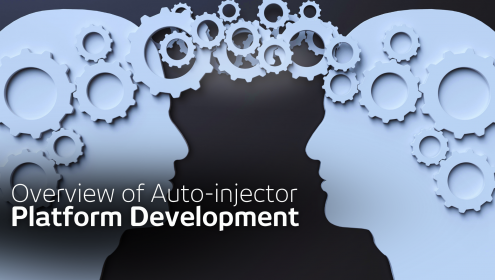Manufacturing Principles
Carlos Feller | 18.03.2021

Manufacturing may be a simple word, but behind it lies many concepts such as technologies, methods, systems, processes, expertise and, of course, … a lot of experience.
Manufacturing is an inherent theme that runs through all stages of the lifecycle of any product. An optimal manufacturing method is one that starts at the time of the original product concept idea and grows continually throughout the development and production stages of the product.
Manufacturing and Product Development
A good manufacturing process should not start when product design is frozen; it has to start much earlier.
When developing a new product such as a drug delivery device, from idea to commercial production, design for manufacturing and design for assembly are inherent steps as alongside other requirements such as functionality, quality or industrial design.
Concurrent design of the manufacturing processes during the evolution of a device ensures an easier transfer from development to commercial production, with fewer process iterations in the course of achieving optimal production systems.
Manufacturing and Quality
Unlike other products, manufacturing of a medical device must be undertaken in the context of a stringent regulatory and quality environment to prevent production of products with defects which can impair its safe and effective use.
The design of each stage of manufacturing starts with a Process Failure Mode & Effect Analysis (PFMEA) undertaken in collaboration of all members of the engineering team who are involved in the development of the product and the design of the associated production systems and equipment. Once the Quality department has approved materials and suppliers for the new product, the Manufacturing department initiates the development of an entire production line until it works perfectly in the manufacturing site.
To ensure that the device reaches the end user without problems and in accordance with current requirements of applicable standards, each process must be validated to confirm that all activities are undertaken without any compromise of performance, with the three pillars of manufacturing policy being Installation, Operational and Performance Qualification.
Manufacturing and Marketing
For any product, the system of manufacturing grows and evolves along with the level of production volumes. Experience gained from each step helps to improve processes, ensuring that commercial-scale production can be carried out without risk of errors.
In order to discover and address uncertain requirements during the verification, engineering qualification and multiple studies of the behavior of the product, design of a production line always begins with equipment for manufacturing small volumes of prototypes, then moves to a line for a small volume of production. Finally, manufacturing progresses to serialization and mass production, according to the commercial requirements of the clients, with annual production typically ranging from thousands to millions of product units.
In such a systematic way, we aim to ensure that patients receive the best products on the market without lowest possible risk of failure.
Manufacturing of Drug Delivery Devices is more than that…
Manufacturing Engineering is more than simply a number of steps through which raw materials are transformed into a final product.
The requirements for medical device products are very strict; involving biocompatibility, special materials, sophisticated mechanisms, specifications for reliability and repeatability – and with devices often being comprised of many sub-components.
Within Manufacturing Engineering, we are able to design and create efficient production systems which comply with these various requirements and with an emphasis on design for assembly, manufacturability – and cost. At E3D, we are familiar with the wide range technologies used in Medical Devices and the application of them in the manufacturing and production of our products.
Our Manufacturing process starts at the very beginning of the product development, it includes working alongside Marketing and quality and regulatory experts as we strive to ensure that the patient receives the best product on the market without possible risk of failure.
Manufacturing Engineering at E3D employs such technologies that have been proven over several decades, including, for example, injection molding, serialization, assembly, and testing. Other sophisticated technologies that we use include ultrasonic welding, laser marking, in-mold labelling (IML), greasing application by volumetric dosing, two component (2C) injection molding, vision system recognition and ultraviolet printing.
Ultimately, the timely development, implementation and evolution of optimal commercial manufacturing systems results in the production of high quality, safe medical devices that can be produced efficiently and economically at all stages of their commercial lifespans.
We fully believe that the consistent performance and safety of our products is always related to the reliability of their manufacture.






